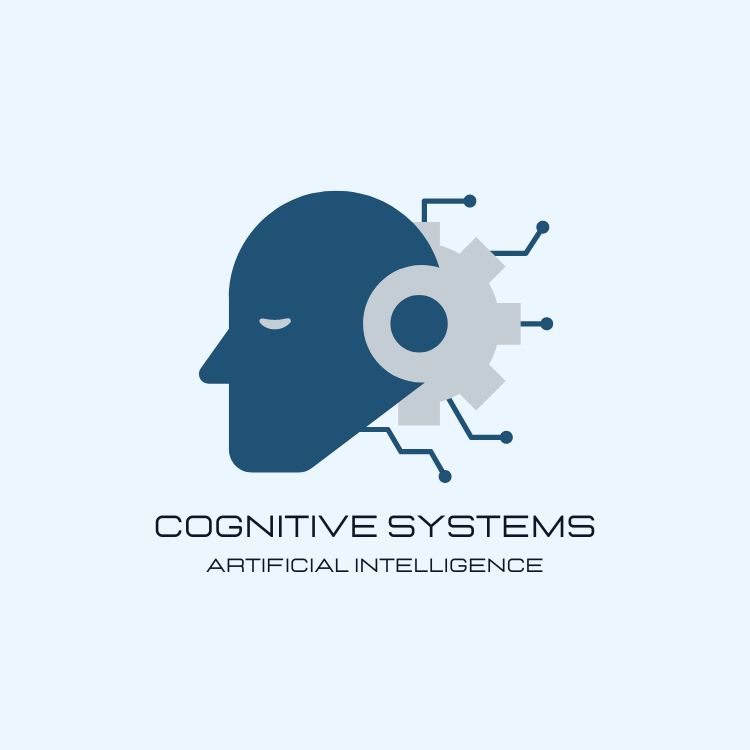Welcome. . . . to the machine!

Artificial Intelligence (AI) is here, whether you like it or not. If that is indeed the case, shouldn’t you know what it is, and understand how it is affecting your personal and business life? Do you want to be able to take advantage of these tools and exploit them for your benefit, until they start exploiting us? Then this is the place to be.
We start by explaining what AI is, then lay out a framework of all the types of AI you have at your disposal. finally, we drill into the individual tools and application you might consider to take advantage of this rapidly developing technology. Let’s get started. . .
Visit our Cognitive Systems YouTube channel if you prefer to watch videos.
https://www.youtube.com/@CognitiveSystems
Introduction to AI
This is basic information to get everyone up to a level playing field. There are three sections:
Demystifying AI: Your Everyday Smart Companion – In this introduction to AI, the text demystifies Artificial Intelligence (AI) as a collection of clever algorithms rather than humanoid robots, emphasizing its role as a digital counterpart to human intelligence. It highlights AI’s presence in everyday life, from personalized recommendations on platforms like Netflix and Spotify to its transformative impact on industries such as healthcare, agriculture, and manufacturing. The narrative underscores AI’s potential to solve real-world problems efficiently, revolutionize various sectors, and democratize knowledge. The text concludes with a call to embrace the AI revolution responsibly, shaping a future where humans and AI coexist for a more intelligent, inclusive, and sustainable world.
Beyond Machines: The Spectrum of AI – In this exploration of AI types, the text introduces the AI zoo, categorizing AI into machine learning, deep learning, and natural language processing (NLP). It likens machine learning to a learning brain, deep learning to a powerful neural network, and NLP to an AI whisperer decoding human language nuances. The metaphorical AI toolbox is then unveiled, showcasing creative tools like text-to-speech generators, music composers, and AI art platforms. The narrative emphasizes the practical applications of AI tools in productivity, connection, and foresees a future where AI contributes to healthcare, disaster prediction, and urban planning. The call to action encourages subscribers to delve deeper into specific AI tools in upcoming videos.
Spotlight on AI Tools – In this introduction, we delve into the realm of artificial intelligence (AI) and explore the diverse AI toolbox. Split into three categories—Creative AI, Productivity AI, and Communication AI—we uncover tools that facilitate artistic expression, enhance productivity, and improve communication. Examples include text-to-speech generators, AI art platforms, virtual assistants, project management tools, and language translation tools. Emphasis is placed on the responsible use of these tools, with an invitation for viewers to share their experiences and tips in the comments. The call to action encourages continued engagement with upcoming content for in-depth explorations of specific AI tools .
Artificial Intelligence Tool Categories
We break the initial tools into three categories as detailed below. Each category starts with an introduction, to set the scope of the category being covered, then drills into each type of tool associated with that category.
Creative AI
Creative AI refers to the intersection of artificial intelligence and creativity, where machine learning algorithms are employed to simulate or enhance human creative processes. In various domains such as music composition, writing, video editing, and 3D design, creative AI tools leverage vast datasets to generate original content, offer suggestions, and streamline creative workflows.
These tools aim to augment human creativity, overcome challenges like writer’s block or design iterations, and open up new possibilities in artistic expression and collaboration.
Text to Speech Tools
Text-to-speech (TTS) tools, powered by artificial intelligence (AI), revolutionize communication by converting written text into natural-sounding audio. The technology, relying on complex algorithms and neural networks, offers various features such as diverse voices, language support, and customizable settings. TTS finds applications in education, marketing, entertainment, and assistive technology, enhancing accessibility and engagement.
The text compares five TTS tools—NaturalReader, Amazon Polly, Lovo, Murf, and ResponsiveVoice—each catering to different needs. Despite advancements, limitations such as emotional expression challenges and biases persist.
The future promises more natural voices and increased accessibility, making TTS a transformative tool with the potential to bridge communication gaps and enrich our interaction with information.
AI Art Generation Tools
AI art platforms, powered by generative adversarial networks (GANs), revolutionize artistic creation by transforming text descriptions, sketches, or random noise into unique artworks. These platforms offer features such as text-to-image generation, style transfer, image upscaling, and 3D rendering, making art creation accessible to everyone.
Real-world applications span concept art, marketing visuals, educational illustrations, personalized art and gifts, and even art therapy.
The text compares three standout AI art platforms—NightCafe, Deep Dream Generator, and Artbreeder—each offering a distinct approach to artistic creation. It emphasizes responsible use, acknowledges limitations and biases, and explores the exciting future of AI in art, envisioning deeper collaboration, hyper-personalization, interactive experiences, and ethical considerations.
The potential of AI art is seen as democratizing the creative process and making art accessible to all.
AI Music Composition Tools
AI music composer tools revolutionize music composition by leveraging machine learning, specifically neural networks, to generate original music based on prompts, preferences, and emotional cues. Key features include melody and harmony generation, arranging and instrumentation, style transfer, and real-time composition, making music creation accessible to everyone.
Real-world applications span film and video games, marketing, education, mental health therapy, and personal projects.
The text compares three prominent platforms—Jukebox by OpenAI, Amper Music, and AIVA—highlighting their distinct personalities and capabilities. It emphasizes responsible use, acknowledges limitations and biases, and explores the exciting future of AI in music, envisioning real-time collaboration, interactive music experiences, personalized coaching, and emotionally intelligent music.
The potential of AI in music composition is seen as democratizing musical creation and reshaping the way we experience and interact with music.
AI Writing Tools
AI writing tools, powered by natural language processing (NLP), revolutionize writing by analyzing vast text datasets to generate content efficiently. Key features include content creation, paraphrasing, summarization, grammar and style checking, and idea generation.
Real-world applications span marketing, journalism, education, technical writing, and personal projects.
The text compares three platforms—Jasper, Grammarly, and Writesonic—highlighting their strengths, and also mentions ChatGPT and Google Bard. It emphasizes responsible use, acknowledges limitations, and discusses biases.
The future of AI writing envisions personalized storytelling, interactive writing experiences, democratized access, bridging language gaps, and unleashing untamed creativity, promising a literary renaissance with dynamic, personalized narratives and universal understanding.
AI Video Editing Tools
AI video editing tools, powered by machine learning, revolutionize video editing by automating tasks like content assembly, color correction, music composition, and special effects. They offer speed, accessibility, creative inspiration, and personalization.
Real-world applications include marketing, education, journalism, film production, and personal creative projects.
The text compares platforms such as Descript, WeVideo, Pictory, InVideo, Kapwing, Wondershare Filmora, and VideoAsk, highlighting their strengths. It emphasizes responsible use, acknowledges limitations, and discusses biases.
The future of AI video editing envisions real-time collaboration, interactive and personalized videos, AI-powered storytellers, augmenting reality, and democratizing access to creativity, promising a cinematic revolution for creators of all levels.
3D Design Tools
AI 3D design tools, powered by machine learning and neural networks, revolutionize design by automating tasks such as modeling, shape optimization, real-time iteration, material generation, and 3D printing optimization. They offer accessibility, speed, creativity, and increased accuracy, with applications spanning product design, architecture, film and game design, medical visualization, and personal artistic expression.
The text compares platforms like Shapr3D, Dreamcatcher, Autodesk Fusion 360, Meshcapade, and Tinkercad, emphasizing their strengths. It discusses responsible usage, acknowledging limitations and potential biases, advocating for human oversight, diverse training data, and critical thinking.
The future of AI 3D design envisions real-time collaboration, interactive prototyping, AI-powered generative design, AI as a creative partner, and democratized access to design innovation, promising a transformative era in artistic expression and creativity.


